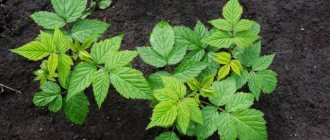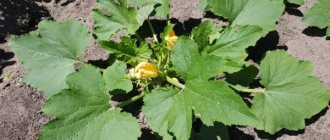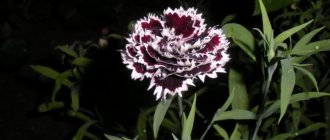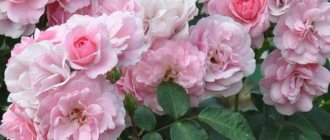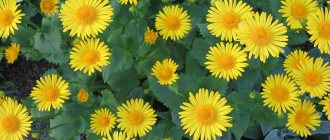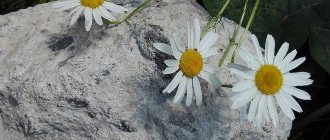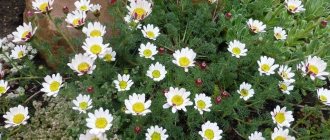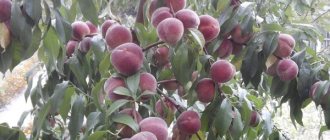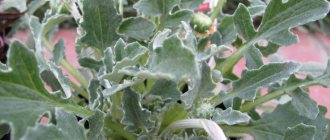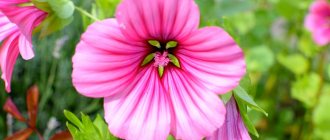About hacienda » Flowers and plants
Flowers and plants
True chamomile, according to the encyclopedic definition, is called flowering annual and perennial plants of the genus Matricaria of the Asteraceae family. There are about two dozen varieties of fragrant herbs in the genus, the flowering of which begins in the first year of life.
In the Asteraceae family there are plants whose flowers are similar in shape to chamomile, for example, cornflower, navel, and they are mistakenly called chamomile, but they do not belong to the genus Matricaria. Some types of chamomile are cultivated as ornamental garden plants. Among them there are forms that have medicinal properties.
Related article:
Unpretentious flowering shrubs in your garden: tips for gardeners
Types and varieties of garden perennial daisies with photos
Chamomile belongs to the aster family, a perennial, although there are also annual varieties. The height of the plant is on average 30–80 cm. Chamomile leaves are beautifully carved, the inflorescences are large single or in the form of inflorescences. The color of the flowers is white with a yellow center. Has a pleasant aroma.
pharmaceutical camomile
Chamomile has about twenty different species, of which the most common is chamomile. It is often found wild in grasslands and is used for medicinal purposes as well as in cosmetic production.
Chamomile has small inflorescences and therefore is not used in ornamental gardening.
Pharmaceutical camomile.
Large garden chamomile
To decorate gardens, large garden chamomile is used, which has many varieties: nivaria, princess, Alaska and others.
Nivyanyk
A popular variety among gardeners because it has a number of significant advantages:
- tolerates winter well;
- easy to care for;
- has a long flowering period - about a month.
Nivyanik has a tall straight stem up to 70 cm with a single inflorescence at the end. The flowers reach a diameter of approximately 7–8 cm. They have snow-white petals and a yellow core. Flowers can bloom in several rows.
Among the most spectacular varieties of cornflower are: Broadway Lights, Goldrush, Edelweiss.
Nivyanyk.
Chamomile flowering can be prolonged by regularly trimming spent stems.
Silver Princess
Also popular among flower lovers. It has a small stem height - about 30 cm. Many side stems grow from the main stem. As a result, the flowering bush looks in the shape of a small ball and looks very impressive. Baskets of inflorescences reach 10 cm. The flowers are snow-white with a yellow core.
This variety blooms for a very long time - from July until frost. Such a long flowering occurs due to the constant formation of new inflorescences on the side stems.
The Silver Princess will look great at the edge of a flower bed, covering the stems of tall flowers such as dahlias.
This variety is suitable for edging a border, flower bed or path.
Silver Princess.
North Star
The variety tolerates frost well, so it is recommended for northern regions.
The northern star has narrowed petals of inflorescences, reminiscent of the rays of a star, like asters. As a result of this flower structure, the variety is classified as decorative and will decorate any flower bed.
The inflorescences of the Northern Star reach 16 cm in diameter with a fairly compact bush shape: the plant stretches up to 50 cm in height.
The dazzling white petal rays harmonize well with the “golden” core of the flower and fully correspond to the name of the variety. North Star flowers are suitable for cutting.
North Star.
Terry
This variety has large double inflorescences and a long flowering period. Often double daisies bloom twice per season.
Terry chamomile is one of the types of chrysanthemums. The most common variety is Aphrodite.
Terry chamomile.
Red
Daisies can be not only the classic white color, but also other colors. Red daisies include red pyrethrum. This is a showy plant with large bright red daisy-shaped flowers. Suitable for cutting.
Red chamomile tolerates drought well, but in winter it needs to be protected from frost. In harsh winters, without shelter, it can freeze.
Red chamomile.
Blue
A relatively young variety of chamomile. Blue chamomile has beautiful large flowers and a bright, unusual color.
Blue chamomile.
Yellow
Yellow daisy is commonly called doronicum. Its flowers bloom very early. Loves shaded areas. The bush reaches 70 cm in height.
Doronicum is easy to care for and grows well even in poor soils. Has a long flowering period. Doronicum flowers are completely yellow, both the center and the petals. Looks beautiful in group plantings.
Yellow chamomile.
Alpine
A distinctive feature of alpine chamomile is its small height - 30–35 cm and large double flowers. Such daisies can be not only white, but also red or purple.
Alpine chamomile looks great on alpine slides, as well as on the edge of a flower bed or mixborder.
Alpine chamomile.
Caring for garden chamomile after planting
All types of chamomile, including garden chamomile, are light-loving. They do not tolerate proximity to groundwater and growing in dense, caking soil.
But at the same time, perennials, beloved by gardeners, are very undemanding to care and can grow even on soils poor in humus, tolerate drought and are not afraid of serious attacks by pests.
However, after planting garden chamomile, caring for them should be careful and systematic. Young plants need frequent watering until rooting is complete. Flowers that are firmly established in a new place are no longer so tender, and they are watered only in hot, dry weather.
The time for watering is chosen so that drops of water in the sun do not act as lenses and do not cause unsightly burns on the leaves and inflorescences.
To maintain soil moisture longer, the root zone is mulched with peat. In addition, the flowerbed is regularly weeded and the surface layer of the earth is loosened.
Although garden daisies are very unpretentious, lush flowering can only be achieved if the plants receive enough nutrition. Therefore, nitrogen fertilizers are applied under the roots in the spring. Wilted inflorescences must be cut off together with the stem. This will help keep the plant strong and decorate the area with white chamomile lace for a long time.
When flowering ends, flower care does not stop. Closer to autumn, adult clumps are divided, all old, dead parts are removed, flower stalks and dry leaves are cut out.
If the soil on the site is acidic, it must be deacidified in the fall using dolomite flour or lime.
Chamomiles are frost-resistant, but in winters with little snow they can freeze out, so before the cold weather the clumps are cut down to the ground and thickly sprinkled with peat, spruce branches or other suitable material.
Landing
Since chamomile is an unpretentious plant, planting it is not particularly difficult. It can be planted using seeds, seedlings or dividing an old bush.
Soil requirements
Chamomiles are not picky about soil, but if they like the soil, flowering will be abundant.
To prepare the soil, you can use ready-made fertilizers for daisies, sold in flower shops. In other cases, mineral phosphorus-potassium or organic fertilizers can be applied. It is better to apply fertilizers for future plantings in the fall.
During the development of the plant, it needs nitrogen fertilizing after the snow melts, during budding, and after flowering. For fertilizing we use urea, ammonium nitrate, mullein, and bird droppings.
When and how to plant
Chamomile loves sunny places. It develops well in unshaded areas.
Plants can be planted in the garden as seedlings, seeds or by dividing an old bush. The most common methods: dividing an overgrown bush or growing seedlings.
If you decide to plant chamomile for the first time and you don’t have old bushes, the easiest way is to buy ready-made seedlings at your nearest flower shop. It is better to plant in the spring. Chamomile grows quickly, so from one plant you can very soon get a whole bed of garden daisies.
Sometimes there is no opportunity to purchase seedlings. In this case, you will have to work with seeds. I recommend germinating the seeds at home, and then, in the spring, planting the seedlings in the ground.
It is better to divide old bushes in the fall, but do not delay the procedure. Young bushes should take root well before the onset of cold weather.
When is the best time to replant?
It is better to replant or plant chamomile in early autumn. To do this, dig up an old bush, divide it into several bushes and plant it in an area with well-fertilized and loose soil. Maintain the distance between holes within 30 cm.
Outdoor care
Chamomile does not require any special care. Watering is required. As for fertilizing, be guided by the condition of the soil: if the ground is covered with mulch of weeds and straw, then fertilizing may be limited. Read more about mulch in the article “How to fill a flower bed with weeds?”
Watering and fertilizing
Water young plants frequently. When the chamomile takes root, watering can be limited. Make sure the soil does not dry out.
Fertilizing is not mandatory care, but when used, plants develop better and bloom more profusely. Feed chamomile three times per season:
- In the spring, after the snow melts.
- During the period of bud ripening.
- After flowering.
As fertilizers, you can use complex fertilizers or urea, ammonium nitrate, mullein, and bird droppings.
Weeding
Like all plants, chamomile needs weeding. Try to remove weeds as soon as they begin to appear. Don’t wait for them to start suppressing your chamomile plantings.
If you want to thin out chamomile plantings that are growing too densely, do not uproot the plants - this can damage the common root of the bush. Trim off excess stems at ground level or trim with pruning shears.
Loosening
Loosen the soil under the plants carefully, without damaging the root system. It is necessary to loosen the soil some time after watering in order to break the crust that has formed and allow the root system to “breathe”.
Loosening can be alternated with watering. It’s not for nothing that this operation is called “dry watering.”
After flowering
In the fall, chamomile is fed with phosphorus-potassium fertilizers. In October, it is good to water the plant with mullein or bird droppings diluted with water in a ratio of 1:10 or 1:15, respectively.
Well-fertilized chamomile bushes will survive the winter and will delight you with magnificent blooms next year.
Preparing for winter
At the end of autumn, prune faded bushes, leaving about 10 cm above the ground surface. Feed the bushes and water them well so that the roots are saturated with water and overwinter well.
Consider covering your chamomile bushes as well. Sprinkle the roots with rotted sawdust or dry leaves. You can cover the bushes with non-woven material.
Trimming
During the season, it is recommended to trim off wilted and diseased leaves. Also trim off the faded heads - this will extend the flowering period of the bush or cause a second wave of flowering.
Carry out anti-aging pruning of chamomile bushes approximately five years after planting. To do this, cut the bush in half. After another three years, repeat the procedure.
For more information about pruning plants, read the article “When it is necessary to carry out decorative pruning of bushes and cutting down young growth according to SanPiN.”
Features of planting and caring for crops
Note! You will have to buy seeds anew each time, since if you collect seeds from last year’s plants, their descendants may not retain their parental qualities.
In April-March, the seeds are planted to a depth of 3-4 mm, kept at a temperature of at least 20 degrees, after which they are planted in pots or special peat cups, in which the shoots are then planted in the ground. Young shoots can withstand light frosts, while adults can easily tolerate slight sub-zero temperatures. In the southern regions, it is possible to plant seeds directly into the beds; this is done in late August-early September.
Pyrethrum prefers loose soil rich in nutrients. Do not plant it in dry, sandy or clayey infertile soil. Also, low-lying places with stagnant water are not suitable; garden chamomile does not like abundant moisture, especially at low temperatures. A shady location with only a few hours of sun each day is ideal.
Pyrethrums should be planted at a distance of 20-30 cm from each other; in the first weeks they need abundant watering. Perennial plants begin to bloom the very next year after planting.
Caring for small chamomile is not difficult, so this plant is ideal for those who do not have a lot of time to work in the garden. The only thing the plant needs is systematic watering. Pyrethrum copes well with weeds on its own; they need to be removed only during the growing season, and then loosen the soil a little to avoid the formation of a dense crust that prevents water from reaching the roots.
Pyrethrum is fed with various mineral fertilizers, but you should not use nitrogen fertilizers: in this case, the plant will only grow the green part, and the flowers will become small and sparse. Organic fertilizers such as manure or humus are also great for chamomile. After the first flowering, it is recommended to remove all inflorescences without waiting for the seeds to prevent repeated flowering.
Important! Garden chamomile must be replanted every four years, otherwise flowering will become poor.
Reproduction
Chamomile is propagated using seedlings grown on a windowsill from seeds, by dividing an old bush, or by sowing seeds directly into the ground in early spring.
Seedling method
With the help of seedlings, chamomile can be grown without fear of late frosts. As a last resort, chamomile seedling bushes can always be covered with covering material.
Seedlings are planted at a distance of 25-30 cm in a checkerboard pattern. Such dense plantings will provide compact groups, since the plants elongate greatly. Several plants are planted in each hole.
Dividing the bush
By dividing the bush you can get many well-formed plants. The bush we want to divide must be older than three years. We plant at the very beginning of autumn so that the young bushes take root well before the onset of cold weather.
It is better to carry out the operation in the evening or in rainy weather in the following sequence:
- Before dividing, cut the stems of the bush to a height of approximately 20 cm.
- To divide an adult chamomile bush, dig it up, first carefully digging around on all sides. Then divide the bush into several sections. Their number depends on the size of the bush. There should be 3-5 stems left in each division. If you cannot divide the bush by hand, perform this operation using pruners or a sharp shovel.
- Leave the finished sections in the air for several hours, and use this time to prepare the holes. Arrange holes where daisies will grow constantly in a checkerboard pattern with distances of 25-30 cm. Fertilize the soil in the holes well. Water the holes and plant cuttings in them.
- Do not forget to shade the young plantings for several days with branches or covering material.
Seeds
Growing daisies from seeds in open ground is not a very rewarding task. The seeds do not germinate well and may freeze in the ground. Poor seed quality can also affect seedlings. If you still decide to grow chamomile from seeds, then follow these recommendations:
- Take a large number of seeds for planting, much more than you want to see shoots.
- Before planting, treat the seeds with preparations that stimulate and strengthen growth.
- Apply sufficient fertilizer to the soil.
- Try to purchase only high-quality seeds from trusted retail outlets.
- Cover the plantings with covering material.
- It is better to germinate the seeds indoors and then plant them in the ground with a clod of earth, without damaging the root of the plant.
If you are starting seeds indoors, start sowing in March. In May, you can transplant the seedlings to a plot of land in warm soil.
Growing daisies from seeds, although a troublesome task, is quite doable.
Pests and treatment of chamomile
Chamomiles, like other herbaceous plants, are susceptible to fungal diseases. They especially spread when the soil is waterlogged. Therefore, there is no need to flood the chamomile plantings too much.
Rust and powdery mildew often cause poor plant development. For prevention or at the first signs of disease, spray chamomile with a 1% solution of Bordeaux mixture. Spray regularly, after about 10 days, 4-5 times. After this, sprinkle the plants with ash.
If you cannot get rid of the disease, it is better to remove the diseased plants and burn them.
Snails and slugs love to feast on the succulent leaves of chamomile. Spraying chamomile bushes with a weak solution of coffee, pepper or mustard helps get rid of them.
Examples of a successful combination of chamomile and other flowers in the garden
Chamomile, with its simple appearance and uncomplicated color, can advantageously highlight any other flowers in the flowerbed, such as roses, gladioli, and dahlias. But there are options for more interesting combinations.
Read about combinations of different flowers in a flowerbed in the article “What flowers go together in a flowerbed.”
Only daisies
A flower bed planted with daisies, as well as other plants with daisy-shaped flowers, looks interesting. Other plants may be:
- Echinacea pink or yellow;
- doronicum;
- asters;
- chrysanthemums;
- gerberas.
This flowerbed is a type of monochrome flower bed, only the flowers here are combined not by color, but by shape. A flower garden of daisies looks extremely cute and evokes affection. The plants differ in size and color, but all of them have a chamomile-shaped inflorescence. Extraordinarily impressive!
In the prairie garden
Chamomile will be indispensable for creating a prairie garden. Such a garden is formed from plants growing in the wild: cereals, steppe and meadow plants. Plants for a prairie garden can be chosen: chistea, echinacea, gray fescue.
Daisies fit perfectly into the prairie landscape. Plant them as single bushes or in small groups.
Monochrome flower garden
It is known that when creating a flower bed or mixborder, a well-chosen combination of flowers of various colors is of great importance. Some colors go well together, others not so much. This task can be eliminated if you create a monochrome flower garden. Here all the flowers will be the same color: red, blue or yellow.
A white flower garden looks most attractive. For this, various plants with white flowers are collected. The basis of a white flower garden can be chamomile. Other white plants can be roses, lilies, gladioli, chrysanthemums, irises, and peonies.
Read about the nuances of growing and caring for lilies in the article “How to plant lilies on the site so that they look beautiful?”
White monochrome flower bed.
If you manage to create such a miracle as a white flower garden, consider that you have received credit in landscape design. It is impossible to imagine anything more beautiful! Delicate light lace of snow-white flowers with different shapes of inflorescences resembles a bride’s outfit, and arouses the admiration of even the most biased viewers.
Flower bed border
Chamomile of the “Silver Princess” variety is suitable for edging a flower garden. Its height is only 30 cm, and the inflorescences reach a diameter of 10 cm. By planting plants tightly along the edge of the flower garden, you will get a wonderful frame. It is not necessary to plant the entire flower garden; it is enough to “frame” only part of it. Framing can be done where you want to cover the long stems of tall flowers.
The white color of border daisies matches or contrasts with any color. In this regard, chamomile can coexist with almost all garden flowers.
Scheme for planting chamomile as a border for a flower bed.
The most popular varieties of cornflower
Or nivnyak, popovnik, garden chamomile, scientifically Leucanthemum vulgare. This is a whole genus of plants, consisting of more than 20 species. These daisies are tall (from 15 to 60 cm) and slender, have flowers with a diameter of 2.5 to 6 cm, with white petals along the edges and a yellow “basket” inside. They are bisexual (can pollinate themselves).
This genus has been cultivated since 1500. It has many flower subspecies.
Broadway Lights
The original cornflowers are pale yellow in color.
Goldrush
Another lemon flowers with thin petals running in several rows. The bushes are low (about 50 cm), flowers are up to 10 cm in diameter.
Edelweiss
Semi-double flowers with double rows of white petals: some are long and straight, moderately wide; others (near the core) are small, rounded. The choice of people who prefer everything original.
Maxima Koenig
The sizes are the same. The center is dark yellow, white petals are in two rows.
May Queen
Height 50 cm, glossy leaves, creeping along the ground.
Rizhskaya
Large (up to 16 cm in diameter) semi-double flowers, white petals are thin, of different shapes.
Real nit
Another original chamomile. Its peculiarity is that the white petals, growing in several rows, are wider at the ends than at the base.
Old court
The flower looks like a white “skinny” chrysanthemum. White petals are thin and straight. Semidouble.
Sans Souci
About a meter in height and up to 12 cm in flower diameter. The yellow center is small, white petals are arranged in several rows.
Silver Spoons (silver spoons)
A species very similar to real nit, however, the petals of such flowers are rather wide than narrow.
Snow Maiden
Interesting “chrysanthemums” with thin petals, very fluffy in appearance, when completely bloomed the yellow center is practically invisible (it is filled with white petals).
Ostrich feather
It looks like an old court, only the petals curl slightly.
Fiona Coghill
The most lush and terry version of the cornflower. The center is slightly yellow, surrounded by a mass of white petals of different sizes, running in many rows. The flowers are relatively small, their diameter is only 7, maximum 8 cm.
the greatest variety of perennial decorative chamomile is considered to be a very successful variety . This is a perennial plant with a height of 50 to 100 cm, with spatulate leaves, flowers with a diameter of about 11 cm, the white petals of which are arranged in 2 rows. This garden crop has been grown since 1816.
Moreover, this variety also has several subspecies. Among them there are also double flowers with many white, slightly curled marginal petals - the central parts of such flowers are white, so many people confuse them with chrysanthemums.
Alaska
Classic white daisy-like flowers with long white petals and shallow centers.
Beethoven
Chamomiles, which are distinguished by abundant flowering and low “growth” (about half a meter).
Victoria's Secret
A beautiful plant with slightly double flowers.
Little Princess
Neat daisies, seemingly simple, but at the same time exquisite.
And finally, there are several more species of nevus growing in the wild. This:
- Kuril nivet (it can be found on the Kuril Islands or the island of Hokkaido; this white flower differs from its fellows in its small size and unusual shape of leaves),
- swamp cornflower (an inhabitant of Portugal and Spain, a low plant with palmate leaves and small flowers up to 2 cm in diameter, in which the white petals are short and the central yellow part is large).
Of course, the so-called terry daisies deserve special attention. Is it difficult to grow these “snowflakes” in our conditions, are they whimsical? You will learn about this from the video:

